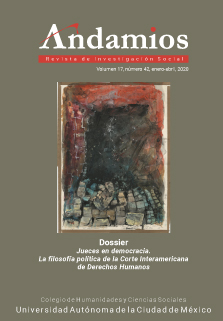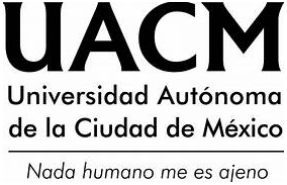La “discriminación de género” en la jurisprudencia de la Corte Interamericana de Derechos Humanos
DOI:
https://doi.org/10.29092/uacm.v17i42.735Keywords:
Género, discriminación estructural, interseccionalidad, Corte Interamericana de Derechos Humanos, medidas de reparación y no repetición,Abstract
Este artículo analiza la jurisprudencia de la Corte Interamericana de Derechos Humanos en materia de discriminación de género. En la primera parte examinamos la polisemia de la categoría género y distinguimos tres enfoques: el de las mujeres como grupo desaventajado (enfoque de mujeres); el que pone el acento en la estructura social discriminatoria (enfoque de género); y el que se dirige a la estructura social compleja que interactúa con otros factores de discriminación (enfoque de la interseccionalidad). La segunda parte está dedicada al análisis de tres casos emblemáticos: Campo Algodonero, Atala Riffo y Gonzales Lluy. Exploramos qué dimensiones subyacen a la identificación de la violación de derechos humanos y sus causas, por un lado, y a las medidas de reparación y no repetición, por el otro. El objetivo es destacar los avances de la jurisprudencia interamericana en materia de discriminación estructural de género y proponer posibles desarrollos futuros.
Downloads
Downloads
Published
Issue
Section
License
This Journal is licensed under Creative Commons Mexico 2.5. It is allowed to reproduce and disseminate the contents of the Journal for educational or research purposes, not for profit, as long as they are not mutilated and cite the source (Andamios, Revista de Investigación Social) and the author.
The copyright of the articles published in Andamios, Revista de Investigación Social are transferred by the author(s) to Universidad Autónoma de la Ciudad de México when the originals have been accepted, so that they are published and distributed both in the printed and electronic versions of the Journal. However, as established by law, the author(s) retains their moral rights. The author(s) will receive a form of assignment of copyright that they must to sign when their original has been accepted. In the case of collective articles, the signature of one of the authors will suffice, provided that the latter has obtained the consent of the others.
Authors may use the material of their article in other works or books published by themselves, with the condition of quoting Andamios as the original source of the texts.
The articles contained in this publication are the responsibility of their authors and do not compromise the official position of Andamios, Revista de Investigación Social of the Universidad Autónoma de la Ciudad de México.


